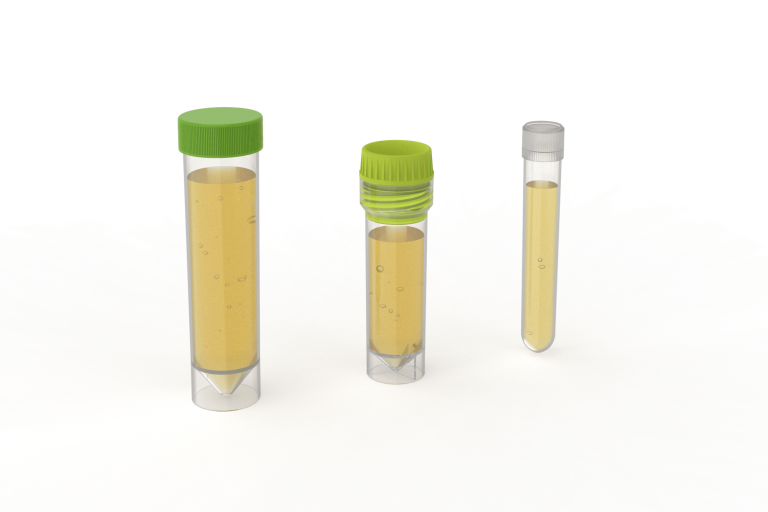Colli-Pee and first-void urine
You are here
Colli-Pee and first-void urine
Colli-Pee for standardized and volumetric collection of first-void urine.
- Urine sampling: an emerging sample type
- Urine Fractions – first-void urine
- When to use first-void urine
Urine sampling: an emerging sample type
Blood might be the most common liquid biopsy, but blood sampling has several limitations:
- It contains a relatively high and complex protein repertoire, that can interfere with biomarker measurements
- It is relatively invasive
- It can pose a risk of infection for both the patient and the caregiver (1,2)
Alternatively, urine sampling has multiple benefits:
- Urine is easily accessible and available in larger quantities
- Urine sampling is non-invasive
- Urine can easily be collected at home by an individual
![]()
Urine fractions - First-void urine
First-void urine, also known as first-catch or first-pass urine is collected at any time of the day and is typically referred to the first 20 mL of urine flush. A first-void urine specimen has shown to contain higher concentrations of sexually transmitted infections (STI)-related DNA than other fractions (3,4). Additionally, first-void urine can be important to identify cancer biomarkers (1).
"I am convinced that the clinical and diagnostic information present in a first-void urine sample still is greatly underestimated. We confirmed that first-void urine is an interesting sample to monitor HPV vaccination programs; possibilities in cervical cancer screening programs are being explored. The non-invasive character of urine sampling, with option of home collection, will definitely help to enroll underserved women in cervical cancer screening and follow-up programs across the world."
Prof. Alex Vorsters
HPV VAXINFECTIO (University of Antwerp)
Read our blog about different urine fractions
When to use first-void urine
For STIs, first-void urine contains more DNA and RNA particles, as well as other analytes than other fractions such as a random or midstream urine sample. For example, several studies have shown that a first-void urine specimen can improve detection of STIs including Chlamydia trachomatis (CT), Neisseria gonorrhoeae (NG) and Mycoplasma genitalium (MG) in men (4).
First-void urine also contains a significantly higher concentration of Human Papillomavirus (HPV) DNA than subsequent fractions (3). Strains of HPV are known to be a major cause of cervical cancer in women.
For urological cancers particularly, a urine specimen is in many situations the preferred liquid biopsy source. Specific DNA, RNA, proteins, and metabolites for prostate cancer have also been identified in first-void urine (5).
![]()
Given the importance of capturing first-void urine for improved accuracy and test results, Novosanis developed Colli-Pee®, a first-void urine collection device. The unique design of the device allows easy collection of first-void urine and improved sample stability, which can be challenging and difficult with a regular urine cup.
Read our blog about urine collection for STI detection
Read our blog about the link between HPV and HIV
Read our blog about HPV detection in urine
Contact us for more information
*Some Novosanis products are in development or not available in all geographic regions. Contact us to know the registration status in your region.
References:
(1) https://novosanis.com/sites/default/files/poster/pdf/White%20Paper%20PCa...
(2) PubMed PMID: 21928247
(3) PubMed PMID: 24916950
(4) PubMed PMID: 30948618
(5) PubMed PMID: 19759844

